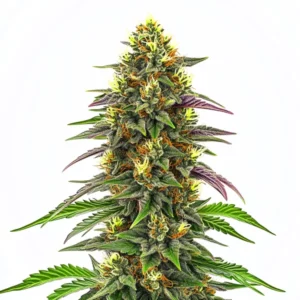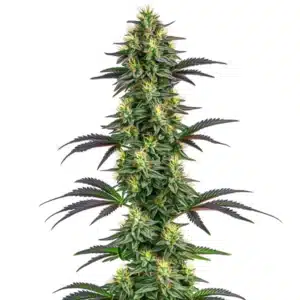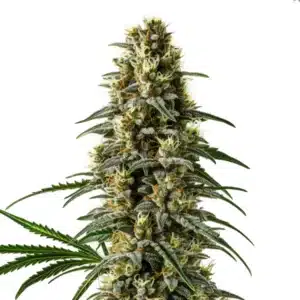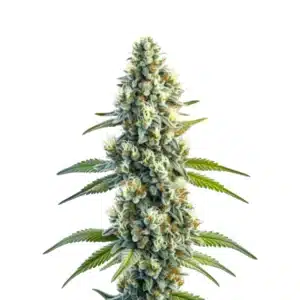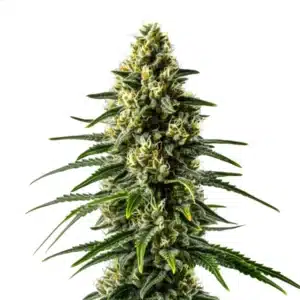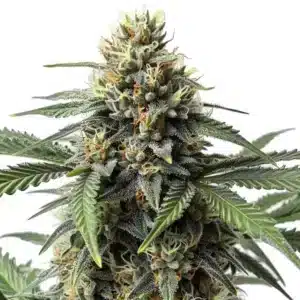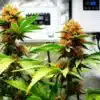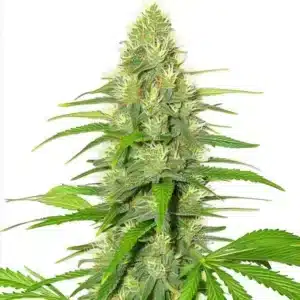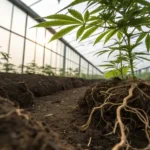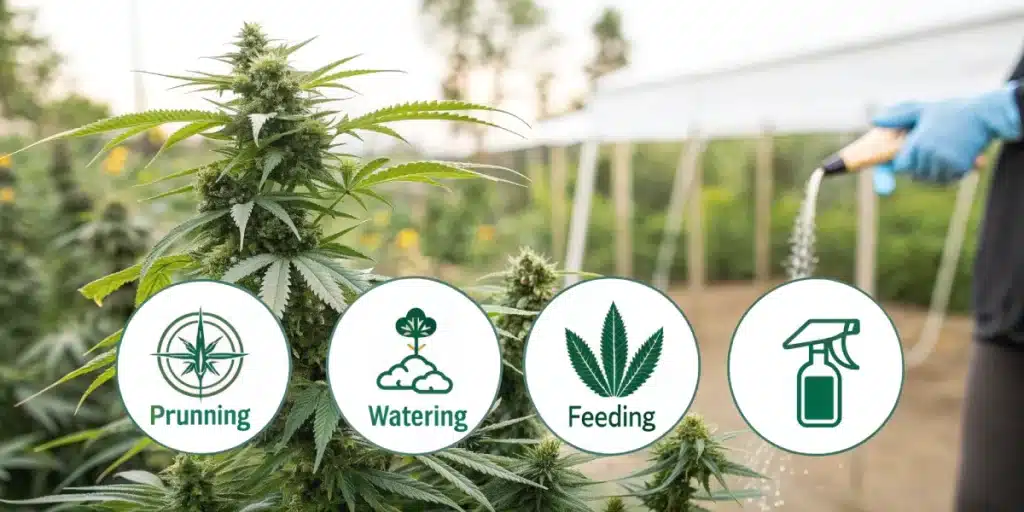
How to Prevent Mold on Outdoor Cannabis: Protect Your Plants from Bud Rot
In the realm of outdoor cannabis cultivation, knowing how to prevent mold on outdoor cannabis is essential for safeguarding your harvest from bud rot and other harmful issues. Healthy plants not only reward you with abundant yields but also resist many common pests and diseases that can lead to fungal outbreaks. With smart feeding practices and maintenance strategies, you can enjoy a robust crop even in challenging conditions.
When your garden faces environmental stress, a proactive mindset makes all the difference. Understanding how to prevent mold on outdoor cannabis means integrating pest control, precise feeding schedules, and careful fertilizer application to keep your plants vigorous. A well-tended outdoor garden offers both beauty and productivity while maintaining a fun yet professional vibe throughout your cultivation journey.
Recommended Strains
Maui Waui
|
|
THC | 14% - 19% (Medium) |
|
|
Type | Feminized |
|
|
Yield | Medium |
|
|
Phenotype | 20% Indica / 80% Sativa |
Hawaii x Purple Skunk
|
|
THC | 15% - 18% (Medium) |
|
|
Type | Feminized |
|
|
Yield | Low |
|
|
Phenotype | 65% Indica / 35% Sativa |
Signs Your Plants Need Feeding: How to Prevent Mold on Outdoor Cannabis
Observing your plants closely gives you early warnings about nutrient deficiencies and potential mold problems. Yellowing leaves, stunted growth, and unusual spots can indicate that your feeding routine needs a tweak. By addressing these issues promptly, you learn how to prevent mold on outdoor cannabis while maintaining optimal plant health. Healthy plants are better equipped to fend off mold and other fungal infections.
Regularly checking the overall vigor of your cannabis ensures that you can identify signs of stress early. Weather fluctuations, pest damage, and even irregular watering can disrupt nutrient uptake, creating a perfect setting for mold to thrive. Smart growers monitor their garden frequently, keeping an eye on every detail to know how to prevent mold on outdoor cannabis while also preparing for pest invasions.
Visual Clues and Environmental Factors: How to Prevent Mold on Outdoor Cannabis
Clear visual clues in your garden can help you determine when it’s time to adjust your feeding strategy. Damp, sticky leaves and early signs of bud rot serve as alarms, suggesting that environmental conditions are favoring fungal growth. By paying attention to these indicators, you learn how to prevent mold on outdoor cannabis by modifying watering routines, optimizing sunlight exposure, and improving airflow.
Environmental factors such as humidity and temperature fluctuations play a significant part in plant health. Pockets of moisture often develop in shaded or overly dense areas, making them hotspots for mold development. Integrating techniques that show how to prevent mold on outdoor cannabis and adjusting your garden layout can help break up these humid zones, keeping your plants happier and healthier.
Recognizing Nutrient Deficiencies Impacting Mold Prevention
Nutrient deficiencies can stress your plants and make them more vulnerable to mold and pest infestations. When plants lack essential minerals, their ability to fend off infections decreases dramatically. A balanced feeding routine not only supports vigorous growth but also teaches you how to prevent mold on outdoor cannabis by bolstering plant immunity. Paying attention to the details in leaf coloration and texture can lead to timely interventions.
Gardening enthusiasts often find that a slight change in their feeding regimen makes a significant difference. If you notice that leaves are fading or spots are forming, consider adjusting the nutrient mix. This attention to detail is key for learning how to prevent mold on outdoor cannabis, as it prevents the conditions that allow bud rot to set in.
Promos & Deals
Feeding Schedule (Vegetative vs Flowering): How to Prevent Mold on Outdoor Cannabis
Timing matters when it comes to feeding your cannabis. A well-planned schedule that adapts to the vegetative and flowering stages contributes to overall plant health and shows how to prevent mold on outdoor cannabis. In the vegetative stage, robust growth demands balanced nutrients, while the flowering phase calls for a delicate shift to support bud development and reduce the risk of fungal infections.
Many seasoned growers adjust their feeding schedule based on the plant’s lifecycle, ensuring that nutrient levels are optimal throughout the growing period. Following a consistent plan not only maximizes yield but also teaches you how to prevent mold on outdoor cannabis by avoiding the excess moisture and nutrient imbalance that can invite bud rot.
Adjusting Your Feeding Routine for Mold Prevention
Fine-tuning your feeding routine during each growth stage plays a key role in maintaining a healthy garden. During the vegetative stage, a steady nutrient supply strengthens the plant’s defenses. As flowering begins, reducing nitrogen and increasing phosphorus can help mitigate excessive moisture retention. This adjustment is one of the best ways to learn how to prevent mold on outdoor cannabis while keeping growth vigorous.
Seasoned growers often experiment with feeding intervals until they pinpoint the perfect balance. Their experience shows that overfeeding can lead to soft tissues more susceptible to mold. Careful timing and nutrient adjustments can protect your crop from bud rot, teaching you how to prevent mold on outdoor cannabis in even the most unpredictable weather conditions.
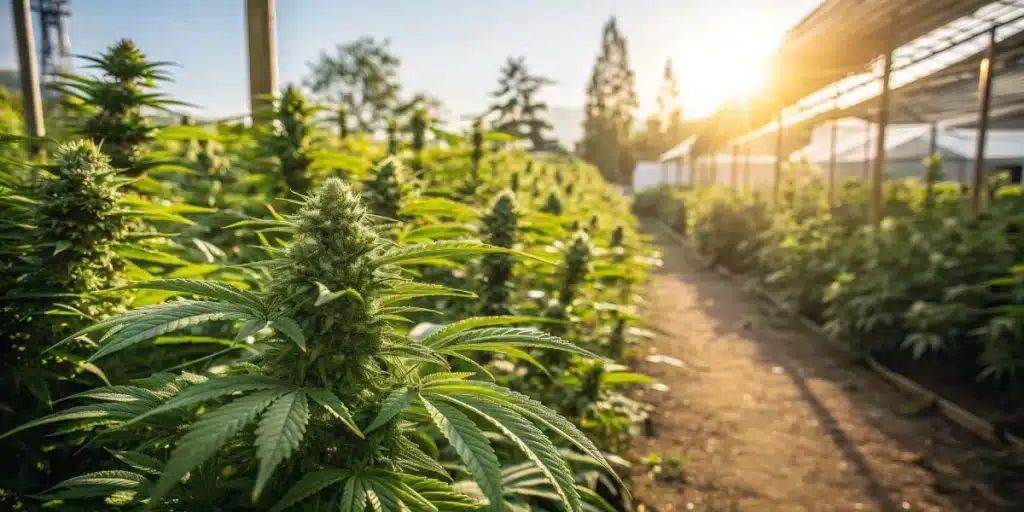
Timing and Temperature Considerations
Feeding your cannabis plants during cooler parts of the day can reduce the chances of moisture buildup and overheating. When temperatures soar, rapid nutrient uptake may lead to excess moisture on the foliage a condition that makes it easier to learn how to prevent mold on outdoor cannabis. Adjusting feeding times to early morning or late afternoon often leads to improved overall plant health.
Understanding the interplay between temperature and feeding schedules is essential. A well-regulated feeding plan minimizes water retention on the leaves, which is critical for staving off bud rot. Careful management of your feeding schedule, especially during fluctuating weather, is a reliable strategy for learning how to prevent mold on outdoor cannabis while also optimizing growth.
How to Apply Fertilizers (Techniques): How to Prevent Mold on Outdoor Cannabis
Effective fertilizer application techniques are a cornerstone for maintaining robust outdoor cannabis. Using proper methods and tools not only feeds your plants efficiently but also shows how to prevent mold on outdoor cannabis by reducing the likelihood of excess moisture. The key is to deliver nutrients directly to the roots while avoiding foliage wetness that can trigger bud rot.
Different techniques suit various garden setups. Whether you opt for drip irrigation, foliar sprays, or soil amendments, each method has implications for how to prevent mold on outdoor cannabis. By choosing the right approach, you ensure that nutrients are absorbed where they’re needed most, fostering resilient growth and minimizing fungal risks.
Effective Fertilizer Application: How to Prevent Mold on Outdoor Cannabis
Precision in fertilizer application is critical. When you target the root zones and limit leaf contact, you reduce the chances of creating damp environments that mold can exploit. Techniques such as direct soil application or using controlled-release fertilizers are highly effective in showing how to prevent mold on outdoor cannabis without sacrificing plant nutrition.
Experimenting with various methods can reveal what works best for your particular garden. Maintaining a clean application process and using quality tools help ensure that your plants remain dry and less prone to bud rot. This hands-on approach demonstrates that learning how to prevent mold on outdoor cannabis is as much about technique as it is about timing.
Tools and Equipment for Consistent Application
Reliable tools streamline the process of fertilizer application and ensure consistency. Whether you use a calibrated sprayer or a precise drip system, the right equipment helps maintain an even distribution of nutrients while keeping the foliage dry. This practice is a practical guide on how to prevent mold on outdoor cannabis, ensuring that every plant receives optimal care.
Gardeners who invest in quality tools often notice a marked improvement in plant health. Regular maintenance of equipment and proper calibration further reinforce best practices for how to prevent mold on outdoor cannabis. With the right equipment in hand, even challenging growing conditions become manageable.
Avoiding Overfeeding and Burn: How to Prevent Mold on Outdoor Cannabis
Overfeeding is a common pitfall that can stress your plants and make them vulnerable to diseases. Excessive nutrients lead to nutrient burn, which in turn creates a damp, soft environment ideal for bud rot. By moderating your feeding routine, you actively learn how to prevent mold on outdoor cannabis while preserving the natural vigor of your crop.
Understanding your plant’s needs and avoiding excessive fertilizer is a skill every grower must master. When plants receive just the right amount of nutrition, they develop stronger cell walls and healthier tissues. This balance is key to learning how to prevent mold on outdoor cannabis while reducing the risk of overfeeding damage.
Understanding Overfeeding Impacts on Mold Risks: How to Prevent Mold on Outdoor Cannabis
Overfeeding causes a chain reaction of stress responses in cannabis plants. It can lead to water retention on the foliage, which creates an environment where mold and bud rot flourish. Recognizing these symptoms early and adjusting nutrient levels is a proven method for learning how to prevent mold on outdoor cannabis.
Every gardener must consider the delicate balance between nutrient supply and environmental stress. Overfed plants are more likely to develop soft spots that invite mold, making careful monitoring a must. By keeping a close eye on feeding practices, you can safeguard your garden.
Balancing Nutrients to Avoid Stress and Mold
Achieving the right balance in your fertilizer mix is an art that prevents plant stress. Nutrient imbalances can lead to weak tissues that succumb to mold. A balanced nutrient program teaches you how to prevent mold on outdoor cannabis while fostering robust plant health. Smart scheduling and precise measurements are your best tools in this regard.
When you fine-tune your feeding approach, you minimize the risks of nutrient burn and moisture buildup. This careful calibration ensures that your plants grow strong and resilient, maintaining an environment where mold and bud rot struggle to take hold. The journey to understanding how to prevent mold on outdoor cannabis is paved with mindful feeding practices.
Effective Maintenance Strategies: How to Prevent Mold on Outdoor Cannabis
A well-maintained outdoor cannabis garden thrives under proper care. Pruning, spacing, and airflow improvements all contribute to a healthier environment, showing growers how to prevent mold on outdoor cannabis. By reducing humidity pockets and encouraging better air circulation, you create conditions that deter bud rot.
Regular garden maintenance not only enhances the aesthetic appeal of your plants but also prevents the conditions that foster mold growth. Effective strategies such as timely pruning and strategic spacing play a significant part in learning how to prevent mold. These practices work together to build a resilient outdoor garden.
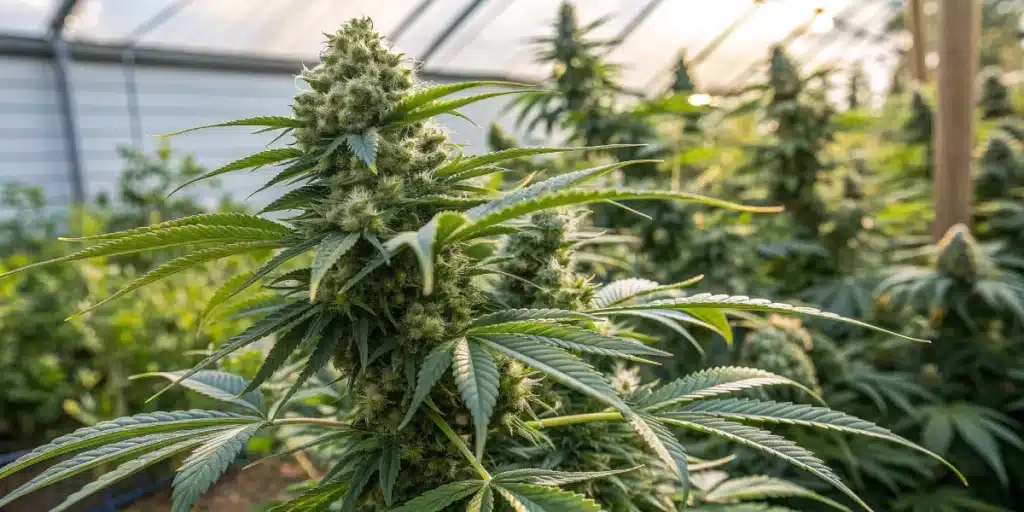
Pruning, Spacing, and Airflow: How to Prevent Mold on Outdoor Cannabis
Proper pruning techniques remove dead or diseased foliage, opening up the canopy and improving airflow. This process is vital for learning how to prevent mold on outdoor cannabis as it minimizes moisture accumulation around the buds. Maintaining adequate spacing between plants further ensures that each one receives sufficient light and air.
Growers often experiment with different pruning styles until they achieve an optimal balance between growth and ventilation. Regular trimming not only improves yield quality but also serves as a preventive measure against mold. Adopting these practices demonstrates how to prevent mold on outdoor cannabis while keeping your garden vibrant and energetic.
Watering Techniques and Humidity Control
Efficient watering methods and active humidity control are essential for a thriving outdoor garden. Drip irrigation systems and well-timed watering sessions reduce leaf wetness and minimize the risk of bud rot. By controlling moisture levels, you learn how to prevent mold on outdoor cannabis even during heavy rain or humid days.
Monitoring humidity with simple tools and adjusting watering frequency can have a profound effect on plant health. Smart watering strategies not only promote robust growth but also serve as a key factor in understanding how to prevent mold on outdoor cannabis. These practices ensure that water is used effectively and that the plants remain in an ideal growing condition.
For example, many growers have reported success with resilient genetics such as Super Boof Auto, which naturally withstand humid environments and contribute to overall garden health.
FAQs
What are the best practices for maintaining proper airflow in an outdoor cannabis garden?
Good airflow is achieved through strategic plant spacing, regular pruning, and removing any dead or overlapping leaves. Maintaining a clean garden layout allows air to circulate freely, reducing the humidity levels that mold thrives on. Using trellises or support structures can further enhance airflow, which is one of the most effective ways to learn.
Additionally, watering in the early morning ensures that moisture evaporates quickly, keeping the plant canopy dry and less inviting to mold spores. These techniques form part of a comprehensive strategy that has proven effective in minimizing bud rot.
How can I adjust my feeding schedule to help reduce the risk of mold?
A balanced feeding schedule that changes with the plant’s life cycle is key. In the vegetative stage, providing a steady supply of balanced nutrients builds strong, resilient tissues. During flowering, reduce nitrogen and emphasize phosphorus and potassium to avoid creating soft, moist tissues that favor mold growth. Monitoring environmental conditions and adjusting nutrient levels accordingly is a reliable method for learning.
Implementing periodic soil tests and using organic supplements can also maintain nutrient balance while keeping humidity levels in check. This method not only supports robust growth but also minimizes the risk factors that lead to bud rot.
What fertilizer application techniques are most effective in preventing mold?
Applying fertilizers directly to the root zone with minimal contact on the foliage is one of the best practices. Techniques such as drip irrigation and controlled-release fertilizers prevent excess moisture on leaves, thereby reducing the risk of mold. Consistency in application and using high-quality products help ensure that your garden remains healthy, demonstrating effective strategies against bud rot.
Many seasoned cultivators mix their feeding and maintenance strategies with robust genetics. For instance, incorporating strains like Fat Bastard Strain into your garden can offer resilience against environmental stress while enhancing overall growth quality.


